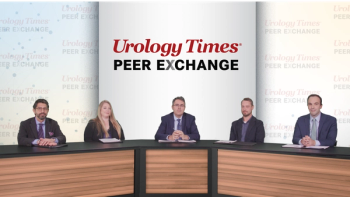
Reflecting on NMIBC Progress: Highlights From AUA 2025 and What’s Ahead
Panelists discuss how recent advancements in NMIBC treatment, including the approval of nadofaragene firadenovec, pembrolizumab, and intravesical therapies like TAR-200, have reshaped care for BCG-unresponsive patients, with promising developments and ongoing trials at AUA 2025 paving the way for more personalized and effective treatment strategies in the future.
Episodes in this series

Physician Summary: Reflections on Progress and Looking Ahead in NMIBC – AUA 2025
As we reflect on the progress made in the treatment of non–muscle-invasive bladder cancer (NMIBC) leading up to AUA 2025, several key accomplishments and developments stand out:
- Pivotal Accomplishments in NMIBC:
- The approval and integration of nadofaragene firadenovec and pembrolizumab into treatment options for BCG-unresponsive NMIBC have been major milestones. These therapies are reshaping how we approach treatment in this difficult-to-manage patient population.
- The advances in intravesical therapies such as TAR-200, UGN-102, and UGN-103 have significantly improved patient convenience, offering sustained release options that reduce treatment burden and improve patient adherence.
- Immunotherapy has emerged as a transformative approach, with KEYNOTE-057 and CORE-001 trials presenting exciting data, demonstrating the potential for combination therapies and the synergy between oncolytic viruses and PD-1 inhibitors.
- Exciting Developments at AUA 2025:
- The new data presented at AUA 2025 highlight the promising long-term efficacy and safety of emerging therapies, including further insights from ongoing trials like ABLE-32 and ABLE-41, which could potentially expand treatment options for intermediate-risk and real-world NMIBC patients.
- Early-stage data on novel immunotherapies and combination approaches with cretostimogene grenadenorepvec and pembrolizumab suggest the potential for increased response rates and durability of treatment outcomes.
- Looking Ahead to 2025 and Beyond:
- Opportunities for Significant Progress: We’re on the cusp of potentially groundbreaking developments in biomarker-driven therapies, which will help tailor treatments to individual patients. The expansion of real-world data will also be crucial in refining treatment strategies for NMIBC.
- What I’m Most Excited About: I’m particularly excited about advances in immunotherapy and intravesical delivery systems. The combination of personalized medicine with cutting-edge treatments holds great promise for improving outcomes in NMIBC patients.
- What I Hope to Achieve in 2025: I look forward to seeing broader access to these new treatments and refining our understanding of their long-term durability, safety, and efficacy. I hope to contribute to optimizing patient selection and minimizing treatment-related adverse effects as we advance these therapies into clinical practice.
In the coming year, I believe we’ll continue to see significant strides in NMIBC treatment, and I am excited to be part of the evolution in care that will ultimately lead to better outcomes for our patients.
Newsletter
Stay current with the latest urology news and practice-changing insights — sign up now for the essential updates every urologist needs.

















